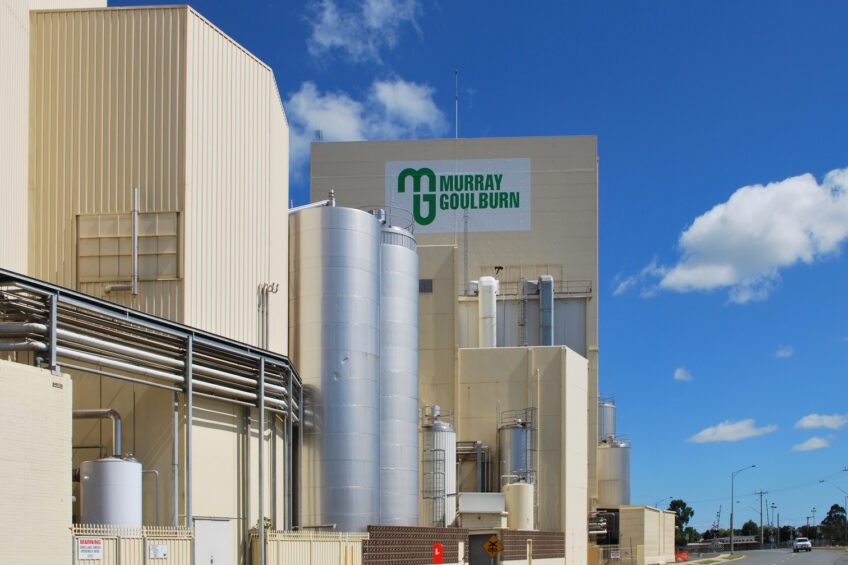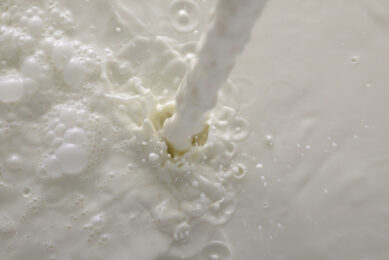Australian dairy farmers optimistic about the future

Dairy farmers in Australia are seeing the price of milk surge, due to the weak Australian dollar. “We can pay off our debts again,” said a farmer in Victoria state.
The declining Australian dollar and increase of exports have, in part, helped the country’s farmers. Although there are enough reasons to be cautious, there is significantly more trust. Various large customers have announced an increase in the price of milk. This appeared in the National Australia Bank’s report.
Dairy farmers have been suffering from low milk prices for some time now. But with the Australian dollar dropping more than 10% compared to US dollar, the dairy farmers now receive more per litre. Currently Australia’s exports over half of its dairy produce in the form of milk powder, butter or cheese.
Dairy cooperative Murray Goulburn has recently announced an unprecedented high price per kg of milk fat – AUD$5.60 (€3.97) before the opening of the 2013-2014 season. That means a rise of 24% compared to the price in the season ending on 30 June 2013.
With the price increase, Murray Goulburn puts pressure on competition. According to the cooperative the price will result in AUD$5.80 (€4) to 6.00 (€4.1) per kg of milk fat for the whole season. This implies an average increase in the milk price by AUD$0.45 per litre.
Murray Goulburn has set a key strategic step with the price increase. The cooperative is in fact working on a campaign to attract new milk farmers. The new production is inevitable to meet the ten-year contract with Coles, a supermarket chain, worth AUD$2 billion (€1.3 billion). According to the director Gary Helou of Murray Goulburn the price increase will lead to AUD$20 million (€13.8 million) extra gain for dairy farmers of the cooperative, when compared with the half year ending 31 December 2012.
“We can afford creating an extra value thanks to our savings, a higher price on the world market and the lower dollar,” concludes Helou. “We notice that the demands for dairy products in Asia and the Middle East are very strong. We expect an annual growth of 5% in the global demand for dairy products. Yet there are also less favourable factors which hit the sector,” stresses Helou. “We have achieved less turnover reduction in Australia, New Zealand and Europe.” Helou has promised to pay out AUD$31 dollars (per 100 kg of milk) to dairy farmers in June 2013. “There has been a severe season with high costs. Many farmers had difficulties paying their invoices. This extra amount of injection will certainly help the farmers.”
Murray Gouldburn is currently leading the trust in Australia.
The remaining companies and cooperatives have not yet released their prices. Global firm, Fonterra has hinted the higher prices are a result of improved circumstance. Supermarket chain Coles has meanwhile also said to pay more to the dairy producers, which will lead to higher prices.
John Droppert of Dairy Australia, investment organisation, clarifies that especially the dairy farmers who supply to the exporters will benefit. “Each value decline of 7% to 10% in the exchange rate of Australian dollar makes a difference of as much as AUD$0.45 (€0.31) to AUD$0.50 (€0.34) cents in the milk price, if you supply to a company like Murray Goulburn.”
Dairy farmer Peter Costello in Victoria state stresses that Australian dairy farmers receive 40% more than the last year in some cases. “That will help many of us to pay off the debts.”
Agricultural sectors now have a different outlook of the future. A survey with different sectors of Australian agriculture, conducted by the National Australian Bank, indicates that the optimism is rising. 42% of the inquiry respondents expect some improvements in the next year. This year there are already more farmers and agricultural enterprises which intend to invest more than in the whole 2012.
Among the poultry farmers the trust has increased by as much as 13%. They are followed by sheep farmers at 10%. However, not every sector is equally optimistic about the future. Grain growers and exporters have more or less the same anticipation. That is largely due to the drop in wheat prices in the US. A large group of Australian farmers are even expecting the situation to deteriorate during the 2013-2014 season.
Long term, according to the Australian government, the expectations are favourable. The demand for agricultural products in Asia is set to double in 2050. China alone accounts for half of the growth, for which Australia can realise a turnover increase of AUD$1.7 billion (€1.2 billion).
Australian dairy sector Season: 2011-2012 |
Join 13,000+ subscribers
Subscribe to our newsletter to stay updated about all the need-to-know content in the dairy sector, two times a week.












